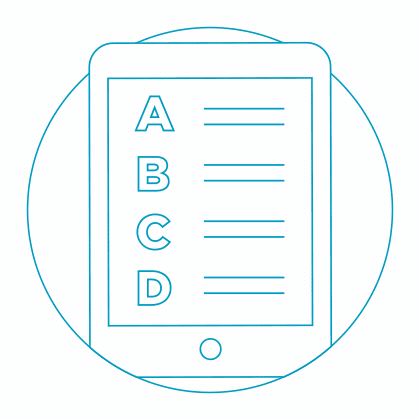Poverty - Online Test
Q1. Which ratio measures the number below poverty line
Answer : Option A
Explaination / Solution:
Below Poverty Line is an economic benchmark used by the government of India to indicate economic disadvantage and to identify individuals and households in need of government assistance and aid. It is determined using various parameters which vary from state to state and within states. The present criteria are based on a survey conducted in 2002. Poverty line solely depends on the per capital income in India rather than level of prices.
Q2. The ratio measures the number of poor below poverty line is known as
Answer : Option C
Explaination / Solution:
When the number of poor is estimated as the proportion of people below the poverty line, it is known as 'head count ratio'.
Q3. In which programme people were encouraged to form SHG
Answer : Option A
Explaination / Solution:
The SGSY(Swarnajayanti Gram Swarojgar Yojana) aims at providing self employment to villagers through the establishment of self help groups. Activity clusters are established based on the aptitude and skill of the people which are nurtured to their maximum potential. Funds are provided by NGO's, banks and financial institutions.
Q4. Integrated rural development programme, Development of women and children in rural areas , Million wells scheme etc. all these amalgamated into a single self-employment programme known as
Answer : Option C
Explaination / Solution:
Swarnajayanti Gram Swarojgar Yojana (SGSY) is an initiative launched by the Government of India to provide sustainable income to poorest of the poor people living in rural & urban areas of the country.
Q5. PDS stands for
Answer : Option A
Explaination / Solution:
Public distribution system (PDS) is an Indian food security system. Established by the Government of India under Ministry of Consumer affairs. Food and and are managed jointly by state government of India. it distributes subsidized food and non-food items to India's poor. This scheme was launched in India on June 1947. Major commodities distributed include staple food grains, such as wheat rise and kerosene through a network of fair price shops (also known as ration shops) established in several states across the country.
Q6. Impose more taxes on rich and commodity of luxury consumption will
Answer : Option D
Explaination / Solution:
In the present era of social and political awakening, it has become a major plank of political policy that inequalities of incomes should be reduced, if not eliminated. India also has decided to set up a ‘socialistic pattern of society’. With this end in view, the government strives to prevent the concentration of wealth and income in a few hands.
Q7. Which of the following programmed was launched in the year of 2000?
Answer : Option B
Explaination / Solution:
Pradhan Mantri Gramodaya Yojana was launched in the year 2000-2001 in all the States and Union Territories of India, in order to achieve the objective of sustainable human development in the village level.
Q8. Who conducts the periodical sample survey for estimating the poverty line in India?
Answer : Option D
Explaination / Solution:
The National Sample Survey Office (NSSO) headed by a Director General is responsible for conduct of large scale sample surveys in diverse fields on All India basis. Primarily data are collected through nation-wide household surveys on various socio-economic subjects, Annual Survey of Industries (ASI), etc. Besides these surveys, NSSO collects data on rural and urban prices and plays a significant role in the improvement of crop statistics through supervision of the area enumeration and crop estimation surveys of the State agencies. It also maintains a frame of urban area units for use in sample surveys in urban areas.
Q9. Which scheme was started in 1993 to create self-employment opportunities for educated unemployed youth in rural areas and small towns?
Answer : Option A
Explaination / Solution:
PMRY is being implemented since 1993. The Scheme is designed to create and provide sustainable self-employment opportunities to one million educated. The Prime Minister Rozgar Yojana (PMRY) was discontinued in 2007-08 and in 2008-09 a new scheme namely Prime Minister’s Employment Generation Programme (PMEGP) has been introduced by merging the two schemes i.e. Prime Minister Rozgar Yojana (PMRY) and Rural Employment Generation Programme (REGP).
Q10. Mid day meal, Public distribution system, integrated child development scheme etc.
Answer : Option D
Explaination / Solution:
The basic needs approach is one of the major approaches to the measurement of absolute poverty in developing countries. Many modern lists emphasize the minimum level of consumption of 'basic needs' of not just food, water, clothing and shelter, but also sanitation, education, and healthcare.
